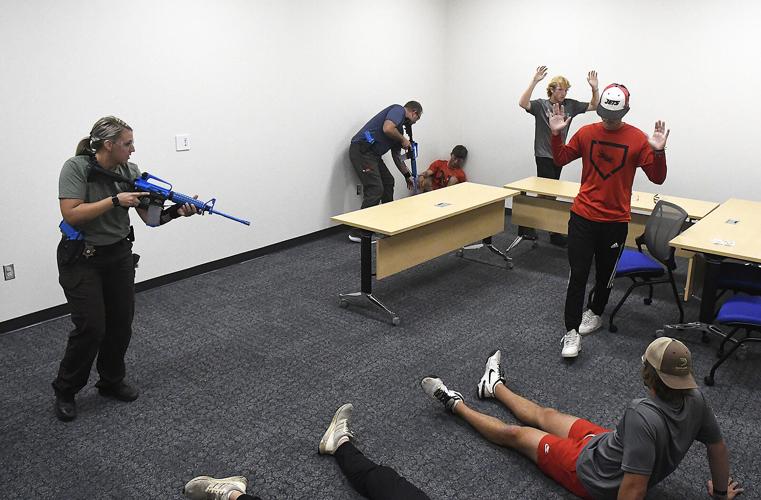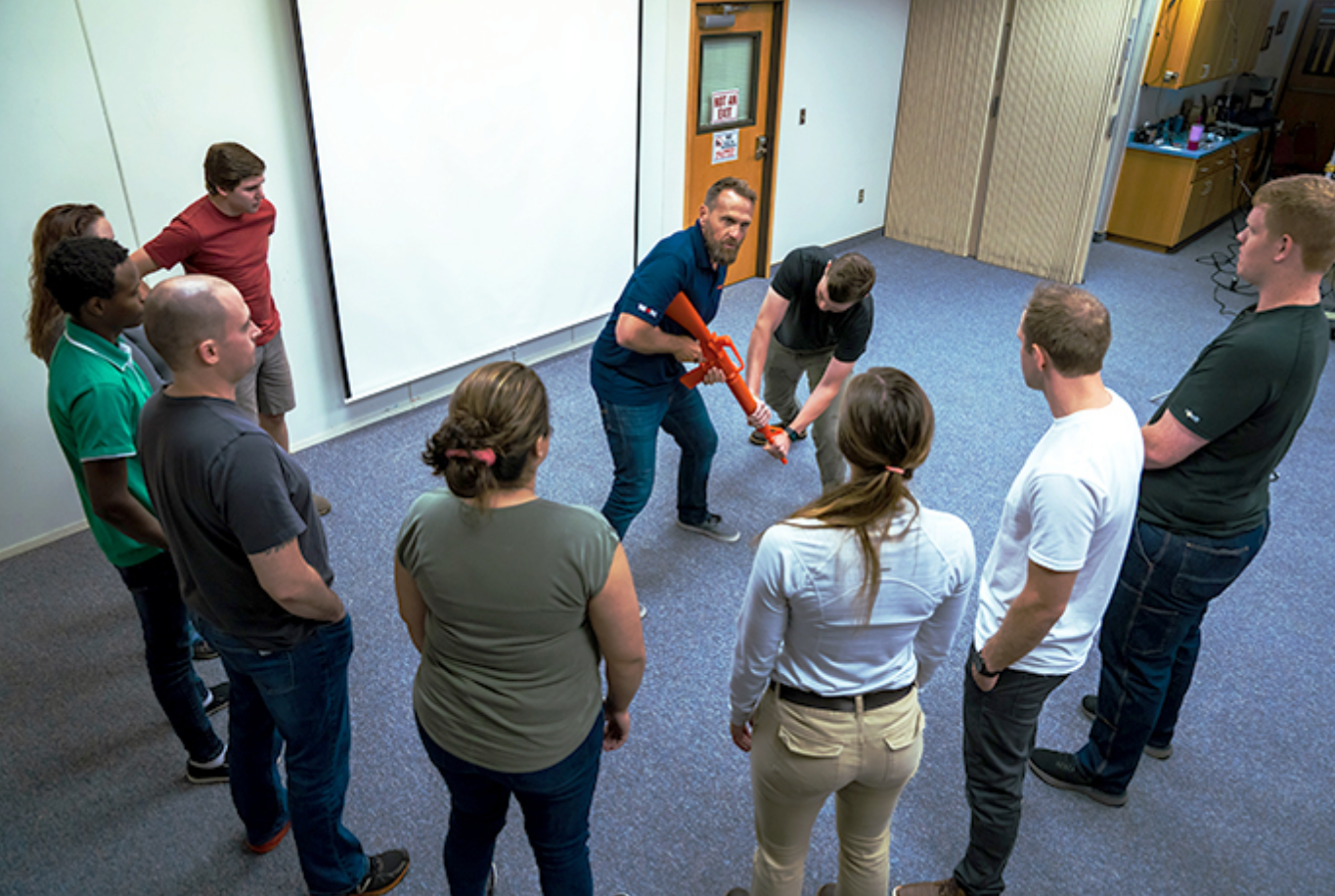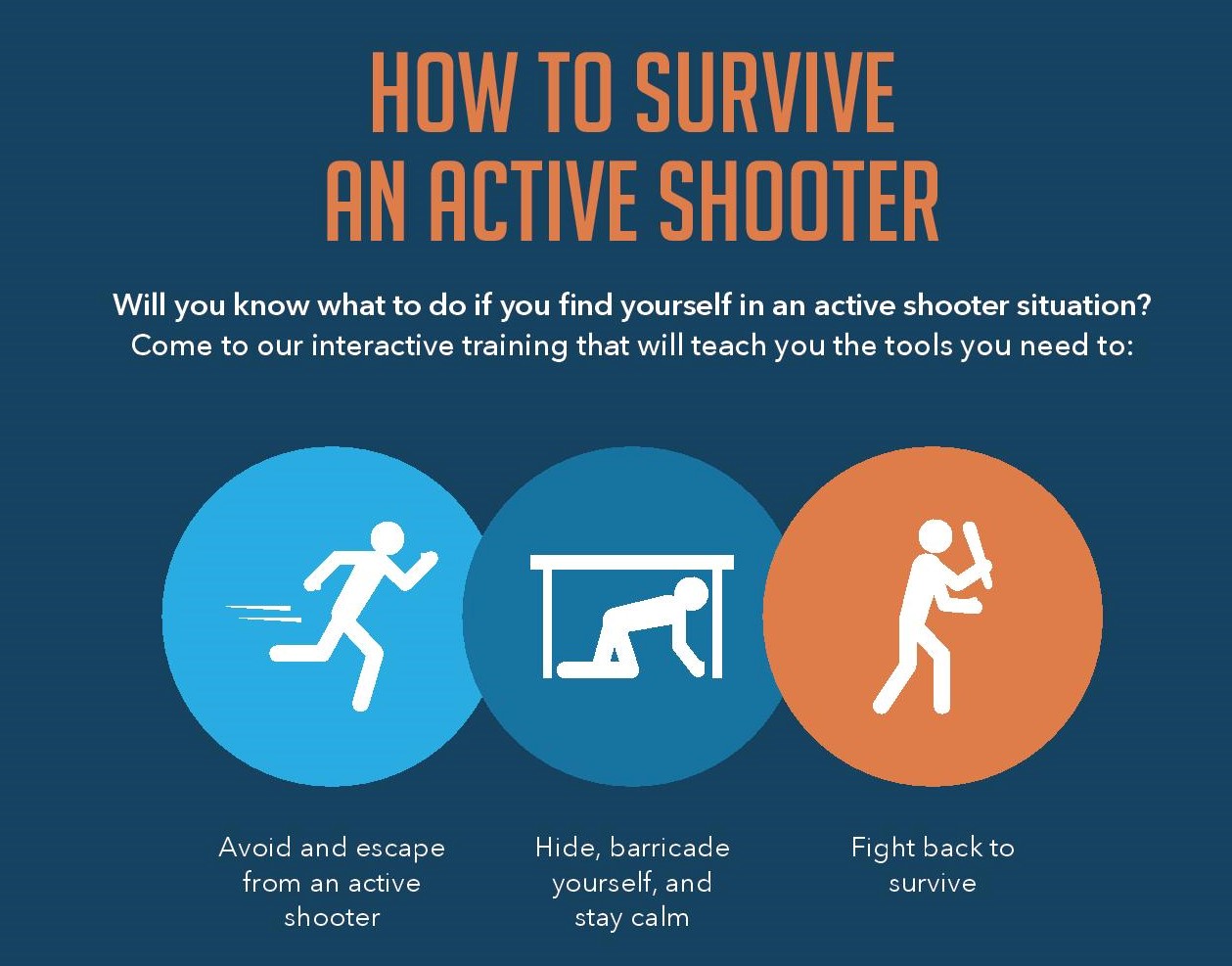Why Active Shooter Training Is Crucial for Work Environment Safety And Security
Why Active Shooter Training Is Crucial for Work Environment Safety And Security
Blog Article
The Essential Function of Energetic Shooter Training in Enhancing Emergency Feedback Approaches in Numerous Atmospheres
Energetic shooter training has actually emerged as a basic component in refining emergency situation action techniques throughout diverse setups, from educational institutions to business environments. The effectiveness of such training pivots on various factors, including the details context in which it is executed and the recurring dedication to improvement.
Relevance of Energetic Shooter Training
In an age noted by raising issues over public security, the relevance of energetic shooter training can not be overstated. As events of gun physical violence in public spaces continue to climb, companies throughout different sectorsâEUR" instructional organizations, offices, and public venuesâEUR" are acknowledging the need of preparing their personnel and communities for such emergencies. Energetic shooter training furnishes individuals with critical skills and understanding to respond properly in deadly circumstances, possibly decreasing casualties and saving lives.
The training not only focuses on instant reaction actions, such as emptying and safeguarding in location, however also promotes a culture of understanding and preparedness. By engaging in practical simulations and conversations, participants can identify potential susceptabilities within their atmosphere and establish techniques for mitigating dangers. In addition, such training boosts communication and sychronisation among employee and first responders, making certain a much more unified technique throughout crises.

Trick Parts of Effective Training
Effective energetic shooter training consists of numerous crucial elements that improve readiness and feedback capacities. Sensible scenario-based simulations are important. These exercises submerse individuals in high-stress circumstances that mimic prospective active shooter occasions, enabling them to practice decision-making and physical actions under pressure.
Additionally, training has to consist of a detailed understanding of communication protocols. Individuals must be fluent in just how to pass on crucial details to police and fellow individuals during an incident. This includes making use of emergency signals and comprehending the chain of command.
An additional necessary element is the consolidation of mental health awareness. Training must deal with the emotional effect of active shooter scenarios, equipping participants with coping methods and resources to support their psychological wellness post-incident.
In addition, regular refresher course training courses are important to guarantee that skills stay sharp and expertise is updated. This constant education and learning strengthens the relevance of preparedness and fosters a culture of safety within organizations.
Training for Different Settings
Active shooter training need to be tailored to the specific settings in which individuals operate, as each establishing presents one-of-a-kind difficulties and dynamics. As an example, training in a business office will certainly differ considerably from that in an institution, mall, or medical care facility. Each setting necessitates a tailored method that considers aspects such as layout, populace density, and here readily available getaway courses.
In schools, training programs ought to stress lockdown procedures, interaction protocols with police, and techniques for shielding students. Alternatively, in corporate settings, training might focus on emptying strategies, identifying suspicious habits, and making use of available resources for protection or shelter-in-place scenarios.
Furthermore, public places like shopping malls or sporting occasions call for comprehensive group monitoring strategies, with an emphasis on fast action coordination among safety and security employees and neighborhood legislation enforcement.
In healthcare atmospheres, training should address certain susceptabilities, such as the visibility of patients who may need instant aid. By recognizing the distinctive qualities of each atmosphere, organizations can establish efficient training modules that improve preparedness and enhance general safety, guaranteeing that individuals are geared up to respond properly in different crisis situations.

Structure a Society of Recognition
Producing a culture of awareness is basic to boosting precaution in any kind of environment, as it empowers people to acknowledge prospective threats and react proactively. This culture necessitates continual education, open communication, and the integration of safety and security procedures into day-to-day routines.
Organizations must focus on active shooter training as part of their overarching safety method, ensuring that all workers recognize the particular threats associated with their setting. Regular training sessions cultivate alertness and experience with emergency situation procedures, motivating people to continue to be alert to uncommon actions or situations.
Furthermore, cultivating a culture of understanding entails developing an environment where reporting questionable task is both urged and normalized. active shooter training. Workers must really feel comfy sharing their concerns without worry of vengeance. This can be achieved through clear channels of interaction and supportive leadership
In useful link addition, engaging in neighborhood collaborations can heighten understanding past business borders, promoting a common responsibility for safety. Efforts such as workshops, drills, and informative sessions can additionally improve cumulative alertness. Ultimately, building a culture of awareness not only prepares individuals for potential crises but also strengthens the overall resilience of the organization against hazards.
Evaluating Training Performance
While regular training sessions are critical for preparedness, reviewing their efficiency is equally essential to make sure that workers are geared up with the necessary skills and expertise to react properly in case of an active shooter circumstance. Examination processes should consist of both qualitative and measurable evaluations to measure the impact of training on feedback abilities.
Surveys and responses from individuals can offer important insights right into the training's significance and applicability. Additionally, performing functional drills and simulations enables organizations to observe real-time decision-making and teamwork under stress. Examining the outcomes of these workouts assists identify toughness and areas for improvement.

Entailing stakeholders, consisting of police and emergency responders, in the analysis procedure can enhance reputation and provide an extensive point of view on training efficiency (active shooter training). Ultimately, a systematic assessment technique makes sure that energetic shooter training continues to be an essential component of an Read Full Report organization's emergency reaction technique, promoting a much safer atmosphere for all
Final Thought
Energetic shooter training is important in fortifying emergency situation action techniques throughout diverse environments. Inevitably, the implementation and analysis of efficient training programs contribute considerably to minimizing the impact of active shooter situations, thus protecting lives and boosting neighborhood resilience.
Report this page